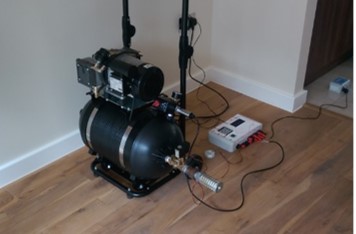Air-pulse tests
I have been involved in using the pulse unit for testing the air permeability of our construction sites. My initial reaction to the unit was how simple it was to use; I have successfully trained others in using the unit to carry out testing. I look forward to the day that the pulse unit will be readily available on construction sites; it would greatly help projects with achieving designed energy performance. (A. Thompson, Lakehouse)
- Quick checks (< 1 min)
- Low pressure pulse
- Portable and easy to use
 Device for air-pulse test © Xiaofeng Zheng
Device for air-pulse test © Xiaofeng Zheng
Report
Airtightness test methodologies
University of Nottingham suggests two methods for the purpose of detecting the location of leakage pathways.